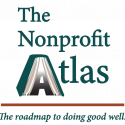Nine Key Actions To Financially Safeguard Your Nonprofit

For many nonprofit leaders, building systems and procedures is a learning process that evolves with growth. However, as teams expand and responsibilities multiply, the lack of structured oversight and training can create opportunities for financial abuse, including theft, fraud, or unauthorized spending.
To protect their mission and resources, nonprofits need strong risk management and accountability measures. Members of the Forbes Nonprofit Council share practical strategies for preventing embezzlement and ensuring financial integrity:
- Bring in Financial Expertise
Rely on seasoned financial professionals—such as board members with accounting experience, fractional CFOs, or external auditors—to identify risks early and maintain sound oversight. - Create Trustworthy Systems, Not Just Trust in People
Strong systems are essential to minimize risk. Separate duties, automate oversight, and prioritize transparency to safeguard funds. - Establish Clear Oversight from Day One
Implement dual approvals, transparent accounting software, and a culture of accountability to prevent gaps that could enable misconduct. - Build Internal Controls into Risk Management Plans
Clearly define financial responsibilities, conduct regular reviews, and promote a culture of fiscal responsibility to strengthen your organization’s reputation and operations. - Prioritize Best Practices in Financial Management
Adopt policies and procedures that reflect industry standards. Regularly review and refine processes to ensure your nonprofit remains financially healthy and transparent. - Make Monthly Audits a Habit
Engage your board in detailed monthly financial reviews. Active participation from leadership is key to maintaining accountability. - Outsource Key Financial and Administrative Roles
Using outside professionals for accounting, bookkeeping, and HR adds expertise and enhances checks and balances. - Leverage Third-Party Audits and Reviews
External audits send a strong message about your commitment to transparency and help detect problems early. - Replace Blind Trust with Clear Systems
Good intentions are no substitute for solid oversight. Regularly revisit your nonprofit’s core values while reinforcing roles, responsibilities, and communication practices.
Ultimately, safeguarding a nonprofit’s finances requires more than trust—it demands proactive systems, regular oversight, and a culture that values accountability as much as impact.
Source: Forbes
The Nonprofit Atlas connects the dots for any “do-gooders” to do the most good. We provide the roadmap to doing good well. We simplify the work of securing resources, relationships, and best practices that fuel a mission and realize a vision. See us in action with a FREE 30-minute consultation.
